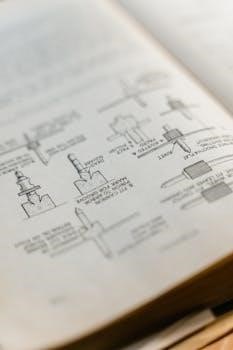Mesh nebulizers are medical devices that transform liquid medication into a fine mist for inhalation. They are used to treat respiratory conditions, like asthma and COPD. These devices offer a portable, fast, and quiet method for delivering medication deep into the lungs.
What is a Mesh Nebulizer?
A mesh nebulizer is a sophisticated medical device that utilizes a vibrating mesh to convert liquid medication into a fine, inhalable aerosol. This technology allows for efficient and targeted drug delivery to the respiratory system. Unlike other types of nebulizers, mesh nebulizers are known for their portability, quiet operation, and rapid treatment times. They are designed to be used by both adults and children in various settings, including home, hospital, and sub-acute care environments. These nebulizers are often preferred for their convenience and effectiveness.

Key Components of a Mesh Nebulizer
A mesh nebulizer consists of several key parts, including the main unit, medication cup, mouthpiece or mask, and a power source. Each component plays a vital role in the device’s function.
Main Unit and Medication Cup
The main unit of a mesh nebulizer houses the internal mechanisms, including the piezoelectric ceramic actuator that creates the mist. It typically includes buttons for power control. The medication cup is a detachable container where the liquid medication is placed. It is essential to use only the original medication cup, filling it with the prescribed amount, usually not exceeding 10 ml. Proper cleaning of the medication cup is crucial to prevent bacterial growth and ensure optimal performance.
Mouthpiece and Masks
Mesh nebulizers come with mouthpieces and masks to facilitate medication inhalation. The mouthpiece is designed for direct inhalation through the mouth, while masks are used for those who cannot use a mouthpiece, including young children. Both the mouthpiece and masks must be properly attached to the nebulizer and should be cleaned and disinfected after each use. Ensuring a proper fit is essential for effective medication delivery. Replacement parts, if needed, should be sourced from the manufacturer.
Power Source⁚ Battery and Charging
Mesh nebulizers typically utilize rechargeable batteries for portability. These batteries often provide a specific duration of continuous use after a full charge, usually around 60 minutes. The devices come with a power adapter for charging. It is important to follow the manufacturer’s instructions for charging to maintain battery health. Avoid using the device while it is charging. Ensure the battery is fully charged before use, and only use the original charger supplied with the nebulizer to prevent damage.
Initial Setup and Preparation
Before use, ensure all components are correctly assembled. Fill the medication cup with the prescribed liquid. Always refer to the user manual for specific assembly and filling instructions to ensure safe operation.
Assembly Instructions
Carefully unpack all components of the mesh nebulizer. Begin by connecting the main unit to the medication cup, ensuring a secure fit. Attach the mouthpiece or mask to the medication cup outlet. Verify that all connections are firm and properly aligned. Refer to the included instruction manual for specific guidance, as assembly may slightly vary between models. Double-check all parts are correctly assembled before adding any medication; Proper assembly is crucial for effective and safe operation, so don’t skip this step!
Filling the Medication Cup
Before filling the medication cup, ensure the nebulizer is turned off and disconnected from any power source. Carefully open the medication cup, following the manufacturer’s instructions. Using the prescribed medication and dosage, fill the cup to the indicated fill line. Avoid overfilling to prevent leaks and ensure proper nebulization. If using multiple medications, consult your doctor on the correct order and mixing. Always use clean, fresh medication and never reuse any leftover liquid from previous treatments. Securely close the medication cup after filling.

Operating the Mesh Nebulizer
To operate, ensure the device is assembled correctly with medication. Power on the nebulizer and begin inhalation. Maintain a steady breathing pattern throughout the treatment for effective medication delivery.
Powering On and Off
To power on the mesh nebulizer, locate the designated power button, typically found on the main unit. Press the button firmly to activate the device, and you should observe the nebulization process begin. To power off the device, press the same power button again. It is important to ensure the device is completely off after each use, not just paused. Always follow manufacturer instructions for the specific model, as button locations and sequences can vary. Proper powering on and off helps preserve battery life and device functionality.
Nebulization Process
The nebulization process begins once the device is powered on, and the liquid medication is transformed into a fine mist. This mist is then delivered through the mouthpiece or mask for inhalation. The mesh technology creates this mist by vibrating, forcing the medication through tiny holes. During operation, ensure the device is held upright to maintain proper mist production and medication delivery. A consistent mist should be visible throughout the treatment. If mist production ceases, check for any obstructions or the need for more medication.
Breathing Technique During Use
During nebulization, it’s crucial to adopt a specific breathing technique to maximize medication delivery to the lungs. Breathe calmly and steadily through your mouth, taking slow, deep breaths. Hold each breath for a second or two before exhaling gently. Avoid rapid or shallow breaths, as this may reduce the amount of medication that reaches your lower airways. If using a mask, ensure it’s sealed tightly around your nose and mouth. Consistent and proper breathing is key to effective treatment with your mesh nebulizer, optimizing the medication’s therapeutic effect.

Cleaning and Maintenance
Regular cleaning is essential to prevent bacterial growth and ensure proper function. Disassemble the nebulizer after each use and wash the components. Allow all parts to air dry before reassembling for the next use.
Cleaning After Each Use
To ensure optimal performance and prevent bacterial growth, it’s crucial to clean your mesh nebulizer after every use. Begin by disassembling the device according to the manufacturer’s instructions. Wash all detachable parts, such as the medication cup, mouthpiece, and mask, using warm, soapy water. Be sure to rinse thoroughly with clean, preferably distilled water, to remove any soap residue. Allow all components to air dry completely on a clean surface before reassembling the nebulizer for its next use. Avoid using tap water for rinsing to prevent mineral buildup.
Disinfection Procedures
In addition to daily cleaning, regular disinfection of your mesh nebulizer is essential to eliminate harmful germs. Disinfection should be performed at least once a week, or as advised by your healthcare provider. Begin by disassembling the device, as you would for cleaning. Submerge the components, excluding the main unit and any electronic parts, in a solution of either diluted white vinegar or a specialized disinfectant solution. Ensure all parts are completely submerged for the recommended time. Rinse thoroughly with distilled water and allow them to air dry completely before reassembling.
Storage Guidelines
Proper storage of your mesh nebulizer is vital to maintain its performance and longevity. After cleaning and disinfection, ensure all parts are completely dry before storing them. Store the nebulizer in a clean, dry place, away from direct sunlight, dust, and moisture. It’s best to keep it in its original case or a designated container to protect it from damage. Avoid storing the device in extreme temperatures or humid environments, as this can degrade the materials and components, potentially affecting its functionality and hygiene. Keeping it in a safe place also helps prevent accidental damage.
Troubleshooting
If your mesh nebulizer isn’t working correctly, check for common issues. These may include a clogged mesh, insufficient power, or incorrect assembly. Consult your user manual for specific solutions.
Common Issues and Solutions
A frequent problem is the nebulizer not producing mist, which can be due to a clogged mesh. Try cleaning the mesh according to the manual. Another issue is weak mist production, possibly caused by low battery; ensure the device is fully charged. If the device doesn’t power on, verify the battery is properly connected or try using a different power source. If the nebulizer is leaking, check if all parts are correctly assembled and the medication cup is securely attached. Always refer to the user manual for model-specific troubleshooting steps.
Safety Precautions
Always follow the user manual for proper usage guidelines. Do not use essential oils or unapproved medications. Ensure the device is clean and correctly assembled before each use to avoid injury.
Proper Usage Guidelines
Before using a mesh nebulizer, carefully read the user manual. Ensure all parts are correctly assembled. Fill the medication cup with the prescribed liquid, following the specified dosage. Use only clean water for nebulization, avoiding distilled or purified water. Do not use health products or medications containing essential oils. Maintain a steady breathing pattern during treatment, and do not exceed the medication cup’s capacity. Clean the device after each use to prevent bacterial growth and damage. If issues arise, consult the user manual for troubleshooting or contact your local dealer.
Medication Compatibility
Mesh nebulizers are designed to aerosolize liquid medications for inhalation. Always consult your doctor or pharmacist regarding the specific medications suitable for your device. Do not use oil-based solutions or those containing essential oils, as they can damage the nebulizer. Ensure the medication’s viscosity is compatible with the mesh technology, and check the user manual for any specific limitations. Improper medication use can affect the device’s performance and your treatment effectiveness. Only use prescribed medications intended for nebulization and follow healthcare provider’s instructions.

Intended Use and Target Users
Mesh nebulizers are designed for both adults and children, generally over four years of age. They are suitable for home, hospital, and sub-acute care settings. These devices help deliver inhaled medication.
Home, Hospital, and Sub-Acute Care
Mesh nebulizers are versatile devices, suitable for various healthcare environments. In the home, they provide convenient respiratory therapy for individuals managing chronic conditions. Hospitals utilize them for acute care, ensuring efficient medication delivery to patients. Sub-acute care facilities also benefit from their portability and ease of use. Their adaptability makes mesh nebulizers a valuable tool in different settings, offering consistent and effective treatment for respiratory ailments. This flexibility ensures patients receive necessary care regardless of their location, promoting better health management.
Pediatric and Adult Use
Mesh nebulizers are designed to cater to both pediatric and adult patients, offering a versatile solution for respiratory treatments. For children, their quiet operation and comfortable masks make the process less daunting. Adults benefit from their portability and ease of use, enabling convenient therapy at home or on the go. Proper mask fitting is crucial for effective medication delivery in both age groups. The device’s adaptability ensures that individuals of all ages can receive the necessary respiratory care, promoting better health outcomes. This dual functionality makes mesh nebulizers a practical choice for families and healthcare providers alike.